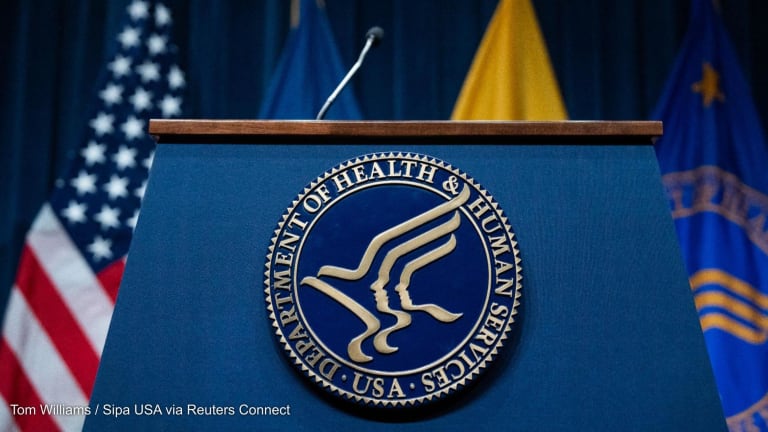
In 2020, Dr. Harvey J. Alter, Michael Houghton, and Charles M. Rice were awarded a Nobel Prize for the discovery of the hepatitis C virus, a breakthrough the Nobel Prize committee said had “made possible blood tests and new medicines that have saved millions of lives.”
While their discovery solved a decades-long scientific mystery and provided hope for many diagnosed with the disease, the burden of hepatitis C has not declined. Accounting for 1.3 million deaths in 2022, hepatitis B virus and hepatitis C virus, or HBV and HCV, combined are among the top four global infectious disease killers alongside tuberculosis, malaria, and HIV. To put this into context, while the number of deaths from HIV, tuberculosis, and malaria have all steadily declined, global deaths from chronic HBV and HCV infection continue to rise.
For many, hepatitis is associated with people who have a history of drug use and high-risk sexual behaviors. Needle usage from tattoos and piercings often are also at higher risk for hepatitis. The stigma around the disease and discrimination faced by people living with viral hepatitis are known to be barriers to testing and care. This may also impact employability and overall livelihood for those diagnosed with the disease.
Often, this is caused by misunderstandings about how hepatitis is transmitted, drastically affecting personal and professional lives and mental health. The reality is that anyone can get hepatitis.
A recent survey by Roche Diagnostics also uncovered that many are reluctant to get screened for the fear of being labeled as someone “who deserves it.” Across 13 low- and middle-income countries, 58% of respondents shared that those diagnosed with hepatitis “deserve it” as a consequence of their harmful behaviors and actions.
Societal attitudes and taboos not only discourage individuals from seeking testing, but also perpetuate a harmful culture of silence surrounding the disease. This is the reality for many.
How can we overcome the culture of silence that gets in the way of people getting tested?
Everyone deserves to get tested
We must first know what we need to solve. The COVID-19 pandemic shook the world into reckoning with the value of knowing and the importance of diagnostic testing in managing infectious diseases. The world saw the value of diagnostics in helping nations manage a disease and support economic productivity.
Diagnostics are critical both to our ability to manage viral hepatitis, and efforts to eliminate it. An accurate diagnosis can allow patients to access appropriate and potentially curative treatments, reducing the likelihood that they will go on to develop chronic disease, and minimizing the risk of serious complications such as cancer. It also enables patients to take action to prevent onward transmission of the virus, reducing overall infections.
However, rates of HBV and HCV diagnosis are very low, averaging 8% and 18%, respectively, globally. Over 60% of HCV infections and 86% of HBV infections are currently going undiagnosed globally, with even more people, including the diagnosed, not receiving treatment.
Driving screening through micro-elimination programs has demonstrated early success. For example, in Egypt, a community-focused approach was adopted for the delivery of testing, treatment, and education about prevention. The approach particularly targeted rural and deprived communities, which account for 57% of the country's population. Egypt’s Ministry of Health and Population also released the Plan of Action for the Prevention, Care & Treatment of Viral Hepatitis as a set of guidelines to battle HCV and other forms of hepatitis. As a result, Egypt saw a decrease in the prevalence of HCV, and by July 2020, the country had screened more than 60 million people for HCV, and treated 4 million residents.

Egypt is one example of progress. Across Asia Pacific, Australia, Japan, Pakistan, South Korea, and Taiwan have also made commendable progress in eliminating hepatitis.
In the case of Pakistan, Aga Khan University led pilot HCV micro-elimination efforts in three Union Councils of Malir District, Karachi in 2022. And in Taiwan, micro-elimination in HIV and HCV infected patients and incarcerated persons showed early success, generating momentum for comprehensive elimination. As a result of funding for greater direct-acting antiviral, or DAA, treatment that can treat HCV, in 2021, restrictions on DAA treatment have been gradually lifted, allowing all HCV patients, regardless of chronicity, to access it.
The funding blind spot with elimination programs
Another major hurdle to elimination is the lack of sufficient funding. Viral hepatitis is severely underfunded compared to HIV, TB, and malaria. In 2017, fewer than 50% of the countries and regions with a national hepatitis elimination plan had secured funding to support those plans. For those that did, the amount of funding would not cover the entire plan.
This is exacerbated by the lack of funding for diagnostics. Despite diagnostics influencing over 70% of clinical decision-making, it receives less than 1% of health care funding.
Testing for hepatitis saves lives and is a crucial first step in preventing transmission. Hepatitis can be treated. Learn more here: https://www.roche.com/solutions/focus-areas/infectious-diseases/hepatitis
Building a more robust testing and treatment plan can reduce the economic burden on a national scale. When not ignored or poorly managed, liver disease can impose a significant clinical and economic burden. Cirrhosis and liver cancer arising as a complication of viral hepatitis often impact individuals and families in their most productive years. This has a ripple effect and imposes a significant cost to health care systems and society. In China, the economic burden of liver cancer was estimated at $11.1 billion in 2019, and is projected to increase by 206% by 2030.
The numbers are unequivocal. For example, in India, HCV treatment costs less than $40 and a year of HBV treatment costs less than $30. In Pakistan, HCV elimination scale-up activities will require an additional investment of $1.45 billion; but by 2050, it will yield a net economic benefit of $ 9.1 billion.
Shining a light on a brighter tomorrow
Viral hepatitis is a public health threat and a leading cause of death globally. Described by the World Health Organization as “one of the most devastating diseases on earth, but also one of the most preventable and treatable,” WHO has set the ambitious target of eliminating viral hepatitis by 2030.
An estimated 4.5 million premature deaths from viral hepatitis could be prevented in LMICs by 2030 through a range of initiatives that include diagnostic tests, medicines, vaccination, and education campaigns that can be delivered via micro-elimination programs.
With WHO as a strong advocate for universal health care, if the global community believes everyone has a right to effective and efficient health care, action must be taken to bridge the barriers and drive greater access to life-saving testing and treatments.




